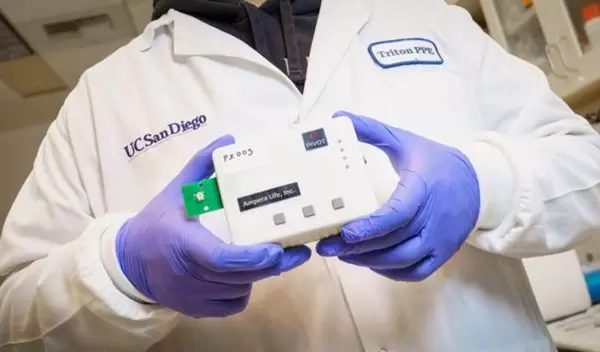
Wireless, handheld, non-invasive device detects Alzheimer's and Parkinson's biomarkers
An international team of researchers has developed a handheld, non-invasive device that can detect biomarkers for Alzheimer's and Parkinson's disease. The device relies on electrical rather than chemical detection, which researchers say is more accurate and easier to implement. It can transmit the results wirelessly to a laptop or smartphone.
The team tested the device on in vitro samples from patients and showed that its accuracy is state-of-the-art.
The researchers used facilities that are part of the U.S. National Science Foundation Materials Research Science and Engineering Center at the University of California San Diego. The findings are published in Proceedings of the National Academy of Sciences.
By the year 2060, it is predicted that about 14 million Americans will suffer from Alzheimer's disease. Other neurodegenerative diseases, such as Parkinson's, are also on the rise. Current testing methods for Alzheimer’s and Parkinson's require a spinal tap and imaging tests, including an MRI. As a result, early detection of the disease is difficult. Testing is especially difficult for patients who are already exhibiting symptoms and have difficulty moving, as well as for those who have no access to local hospitals or medical facilities.
The new result is the result of three decades of work. In the current research, the team adapted a device during the COVID-19 pandemic to detect the spike and nucleoproteins in the live virus.
The scientists tested the device with brain-derived amyloid proteins from deceased Alzheimer's and Parkinson's patients. The biosensors were able to detect specific biomarkers for both conditions with great accuracy, on par with existing state-of-the-art methods. The device also works with extremely small sample sizes.
The next steps include testing blood plasma and cerebrospinal fluid, then finally saliva and urine. The tests would take place in hospital settings and nursing homes. The goal is to have the device on the market in a year.
